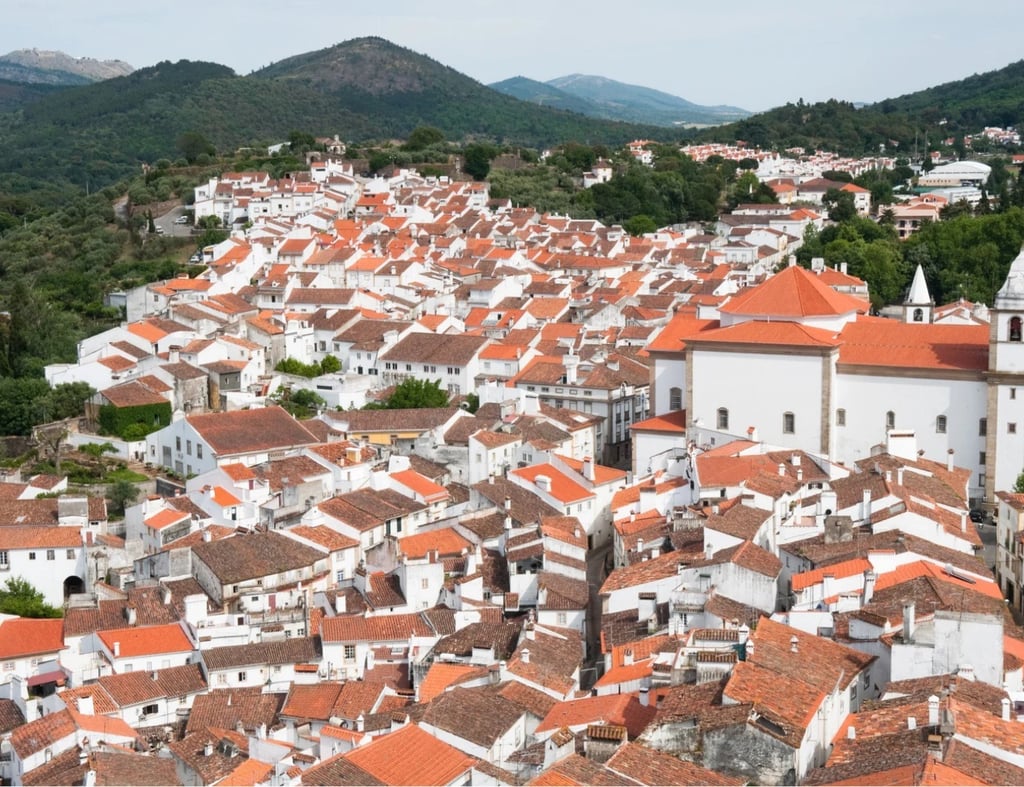Key Facts about Castelo de Vide, Portugal
Castelo de Vide is a timeless Portuguese treasure — quiet, elevated, and bathed in white stone. Wander through its medieval lanes, explore the ancient Jewish quarter, climb up to the castle walls, and immerse yourself in the rustic rhythm of Alentejo life. Here, history is not only preserved — it flows through the air, the architecture, and the landscapes. 🇵🇹
11/3/20251 min read


Location
Castelo de Vide is located in the Alentejo region of eastern Portugal, near the border with Spain. It lies within the district of Portalegre, surrounded by rolling landscapes, cork oak forests, and historic rural villages.
Known for
Castelo de Vide is known for its medieval whitewashed town, its well-preserved Jewish quarter, and the impressive hilltop castle offering panoramic views. It’s one of Portugal’s most atmospheric historical towns — quiet, slow-paced, and deeply tied to centuries of cultural heritage.
Best Time to Visit
April–June: Best climate, spring bloom, fewer tourists.
September–October: Warm days + perfect for exploring heritage sites.
December: Beautiful winter charm and holiday traditions.
Local Language
Portuguese.
Currency
Euro (€).
Getting There
By air: The nearest major airport is Lisbon Airport (LIS) — approx. 2 hours 30 minutes by car.
By car: The easiest route is via A6 and IP2 roads from Lisbon or Évora.
By train/bus: Regional services operate from Portalegre and Lisbon toward Castelo de Vide, with connections.
Top Attractions
Castelo de Vide Castle: Dominating the town skyline with centuries of history and breathtaking views.
Historic Jewish Quarter + Synagogue: One of the best preserved in Portugal with deep cultural significance.
Portas da Vila: Iconic medieval entrance into the old town.
Fonte da Vila: A historical fountain from the 16th century.
Nossa Senhora da Penha Sanctuary: Situated on a hill overlooking the town and countryside.
Local Specialties
Cozido à Portuguesa — traditional slow-cooked meats and vegetables.
Açorda Alentejana — garlic + cilantro bread soup, iconic to Alentejo.
Cheeses from Portalegre region — artisanal, rustic, and rich.
Local olive oils and cured sausages.
Ginjinha (cherry liqueur).
Notable Events
Semana Santa (Holy Week): One of the most important religious festivals with dramatic, traditional processions.
Medieval Fair (Summer): Recreates historical scenes, markets, artisans, crafts, and performances.
Feira de São João (June): Historic fair filled with food, crafts, and music.
Contact us
Copyright © 2025. Ralnoscape All rights reserved.
Destinations
Resources


Follow us
This website uses affiliate links which may earn a commission at no additional cost to you
